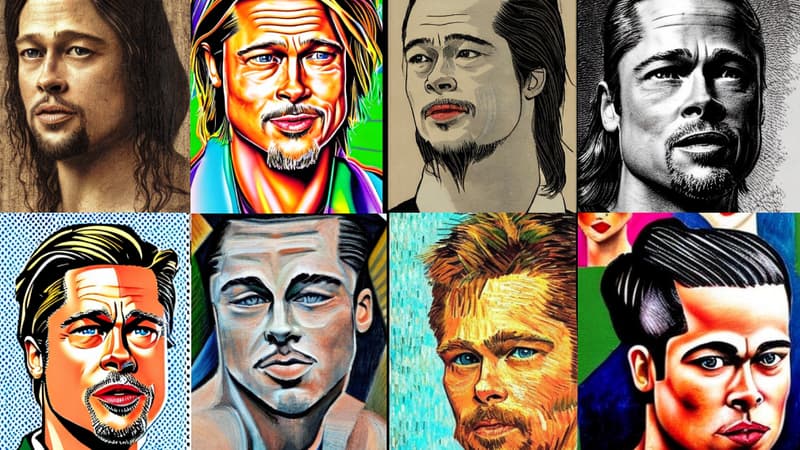Faced with the artificial intelligences that grind their works to generate content, the authors retaliate with the first complaints. Their battle will be hard: in Europe as in North America, the correct it leans towards AI but could evolve, according to lawyers.
In January, in the United States, three artists filed a complaint against Stable Diffusion, Midjourney and DeviantArt, and the Getty photo agency against Stable Diffusion. They dispute the correct AIs to process billions of texts or images, which allowed their “learning”.
In Europe, a 2019 European directive, transposed in 22 States including France, authorizes this “correct digging” (data mining), even on low content correct d‘authorif it is publicly available.
Unless the owner of the rights has expressly opposed it.
“This exception to correct d‘authortailor-made to allow the development of these technologies, it has gone relatively unnoticed”, comments Maître Charles Bouffier, of the Racine firm.
The difficulty will be getting your opposition respected. “How do you know if a work has been used in the apprenticeship phase?” asks the master Pierre Pérot, from the August Debouzy cabinet.
HE correct American also licenses data mining for fair use, enshrined during a lawsuit against Google over the digitization of books won by the American giant.
For generated content, the legal status is complicated. Are these fakes, especially if the AI user has requested the production “in the style” of a author or imitating a logo?
HE correct French and European, like the correct US, only recognizes infringement in the case of a copy of a specific work. “Not a genre, not a style, not an idea can be protected by the correct d‘author“, remarks Maître Eric Barbry, from the Racine firm. On the other hand, if we clearly recognize the source in the generated image, the question arises.
In Europe, a concept could protect artists copied by AI: that of “parasitism”, which sanctions the “looting” of the efforts of others. This French jurisprudence opens correct compensation if loss of earnings is proven.
Recently, the big luxury houses have thus won over the fashion manufacturers who copied their “universe”, points out the master Marc Mossé, of August Debouzy.
Obligation of transparency?
Finally, there is the question of the commercial use of this content. Who do they belong to? Can they be sold and benefit from a correct d‘author?
First, legal scholars believe that an AI does not own or authornor responsible. “The AIs indicate in their general conditions that the user, and only he, is responsible for the use he will make of the content”, underlines the teacher Pérot. “Therefore, nothing prevents it from being commercialized.”
Should it be specified that it comes from an AI? This could be the case of consumer information. The future European directive on AI (IA Act) could also provide for a transparency obligation.
is still the subject of correct d‘author. HE correct French and European regulations specify that a work can only benefit from it if it is original and expresses the personality of theauthor. “This infers that theauthor is a natural person”, according to Maître Bouffier.
No court in Europe has yet decided, but in the United States the Office of Copyright just refused correct d‘author to an AI generated comic.
“This is the approach that European courts could take. With one caveat”, the teacher Pérot qualifies, when the user had a leading role.
He cites the case of “Space Opera Theatre,” an AI-generated image that won a contest in September. His producer spent 80 hours fine-tuning his instructions and tweaking the result.
“We can consider there that the user played an important role and that there is room for correct d‘author“, points out the lawyer, citing “a work of supervision, choice, analysis, selection”.
AI productions would thus follow the path of photography, considered the product of a tool and not a work until a 2011 EU Court of Justice ruling that recognized photographers as “creative options”.
Source: BFM TV


